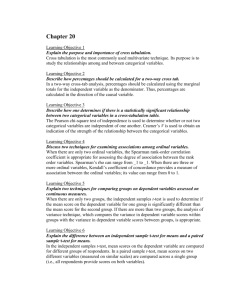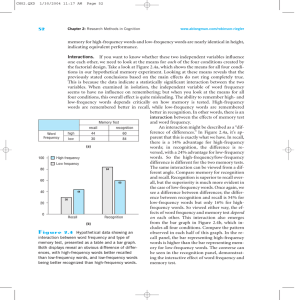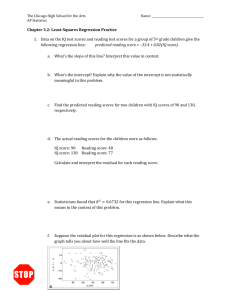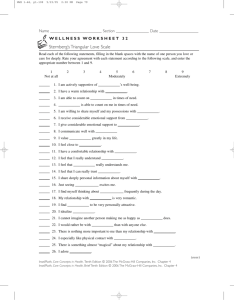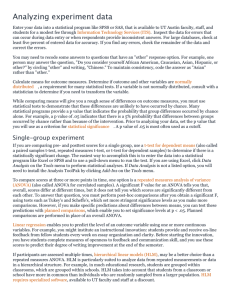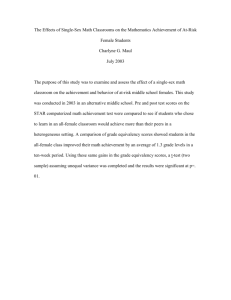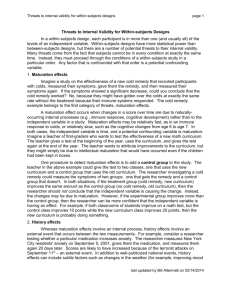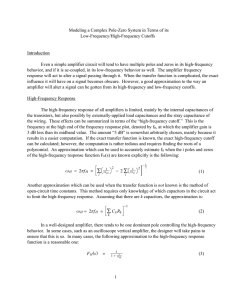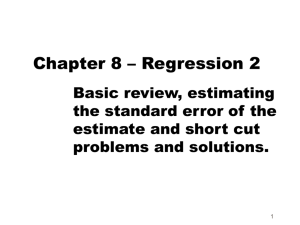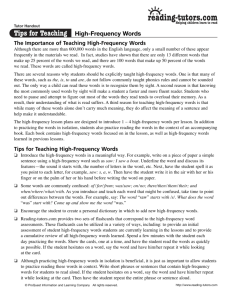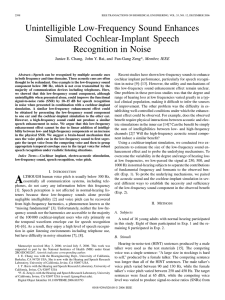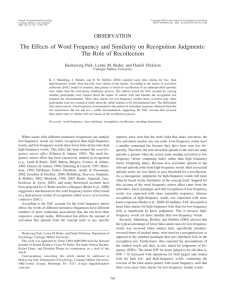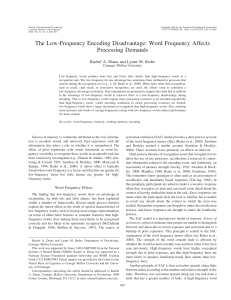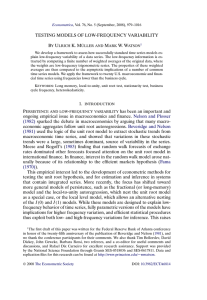Quantitative Methods Assessment Number 1 Exam number
advertisement
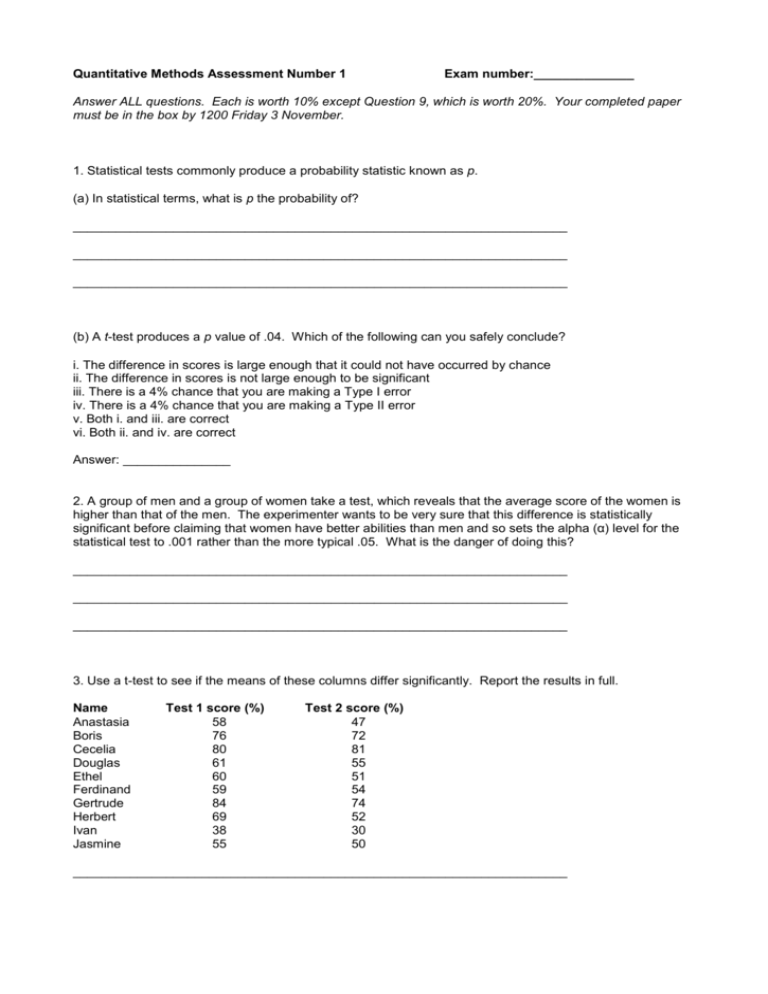
Quantitative Methods Assessment Number 1 Exam number:______________ Answer ALL questions. Each is worth 10% except Question 9, which is worth 20%. Your completed paper must be in the box by 1200 Friday 3 November. 1. Statistical tests commonly produce a probability statistic known as p. (a) In statistical terms, what is p the probability of? _____________________________________________________________________ _____________________________________________________________________ _____________________________________________________________________ (b) A t-test produces a p value of .04. Which of the following can you safely conclude? i. The difference in scores is large enough that it could not have occurred by chance ii. The difference in scores is not large enough to be significant iii. There is a 4% chance that you are making a Type I error iv. There is a 4% chance that you are making a Type II error v. Both i. and iii. are correct vi. Both ii. and iv. are correct Answer: _______________ 2. A group of men and a group of women take a test, which reveals that the average score of the women is higher than that of the men. The experimenter wants to be very sure that this difference is statistically significant before claiming that women have better abilities than men and so sets the alpha (α) level for the statistical test to .001 rather than the more typical .05. What is the danger of doing this? _____________________________________________________________________ _____________________________________________________________________ _____________________________________________________________________ 3. Use a t-test to see if the means of these columns differ significantly. Report the results in full. Name Anastasia Boris Cecelia Douglas Ethel Ferdinand Gertrude Herbert Ivan Jasmine Test 1 score (%) 58 76 80 61 60 59 84 69 38 55 Test 2 score (%) 47 72 81 55 51 54 74 52 30 50 _____________________________________________________________________ 4. (a) Calculate the correlation between these two sets of data: IQ 104 101 96 110 89 108 100 94 98 100 77 Exam score (%) 68 61 64 77 54 70 68 62 70 70 51 r = ________ (b) What percentage of the exam score variance can be predicted from variation in IQ? ______________________________________________________________________ 5. The 11 students who provided the data for Question 4 each spent a different number of hours revising, as follows (in order from top to bottom): 17, 13, 20, 22, 13, 15, 15, 14.5, 17, 16, 11 Repeat the analysis from Question 4 controlling for the effects of revision time r = ____________ 6. An experimenter designs a new questionnaire and wants to know whether it is reliable or not (i.e., whether it is consistent in its measurement). They correlate the scores from the first half of the test with the scores from the second half of the test and find that these correlate with r = .75. (a) What is the split-half reliability of this test? ___________________________________ (b) Does this questionnaire meet the standard criterion for being reliable? Say why. ________________________________________________________________________ ________________________________________________________________________ 7. You test a group of students and find that the relationship between their exam anxiety measures (predictor) and exam scores (outcome) can be best described by the formula: y = -1.5x + 77.8 If Jim has an anxiety score that is 4 points higher than Sally’s, what difference should you expect between their exam scores? Answer: Jim’s exam score will be _________ points lower / higher* than Sally’s * delete as appropriate 8. For the data given in question 3, what is the regression equation predicting performance in Test 2 from performance in Test 1? What is the associated r2 value? _______________________________________________________________________ 9. A high-frequency word is one that is used very commonly in everyday language whereas a low-frequency word is one that is used only rarely. There is lots of evidence that the mind processes these differently, such that high-frequency words are usually processed faster than low-frequency words. Sternberg (1966) found that if a list of words is memorized, the time taken to search through it is longer for a long list than for a short list. In fact, the relationship between search time and list length can be accurately modelled by a linear regression function. A new experiment sought to extend Sternberg’s procedure by seeing whether the regression functions predicting search time from list length varied as a function of word frequency. Read the following passage describing the results of this experiment and then write a brief but comprehensive description, explaining the results in English and saying what they can tell us about the experimental question. The regression function predicting the speed of search (in milliseconds) from list length was y = 51.00x + 756.07 for the high-frequency words and y = 62.49x + 773.51 for the low-frequency words. The slope of the list length–search time function has been interpreted as a measure of the time taken to search each item in memory (Sternberg, 1966). Therefore the slopes and intercepts of these regression functions were calculated for each participant. Two two-tailed t-tests showed that neither the slopes (t[25] = 0.86, n.s.) nor the intercepts (t[25] = 0.48, n.s.) differed significantly between the high and low-frequency words. __________________________________________________________________________ __________________________________________________________________________ __________________________________________________________________________ __________________________________________________________________________ __________________________________________________________________________ __________________________________________________________________________ __________________________________________________________________________ __________________________________________________________________________ __________________________________________________________________________ __________________________________________________________________________ __________________________________________________________________________ __________________________________________________________________________ __________________________________________________________________________ __________________________________________________________________________ __________________________________________________________________________

